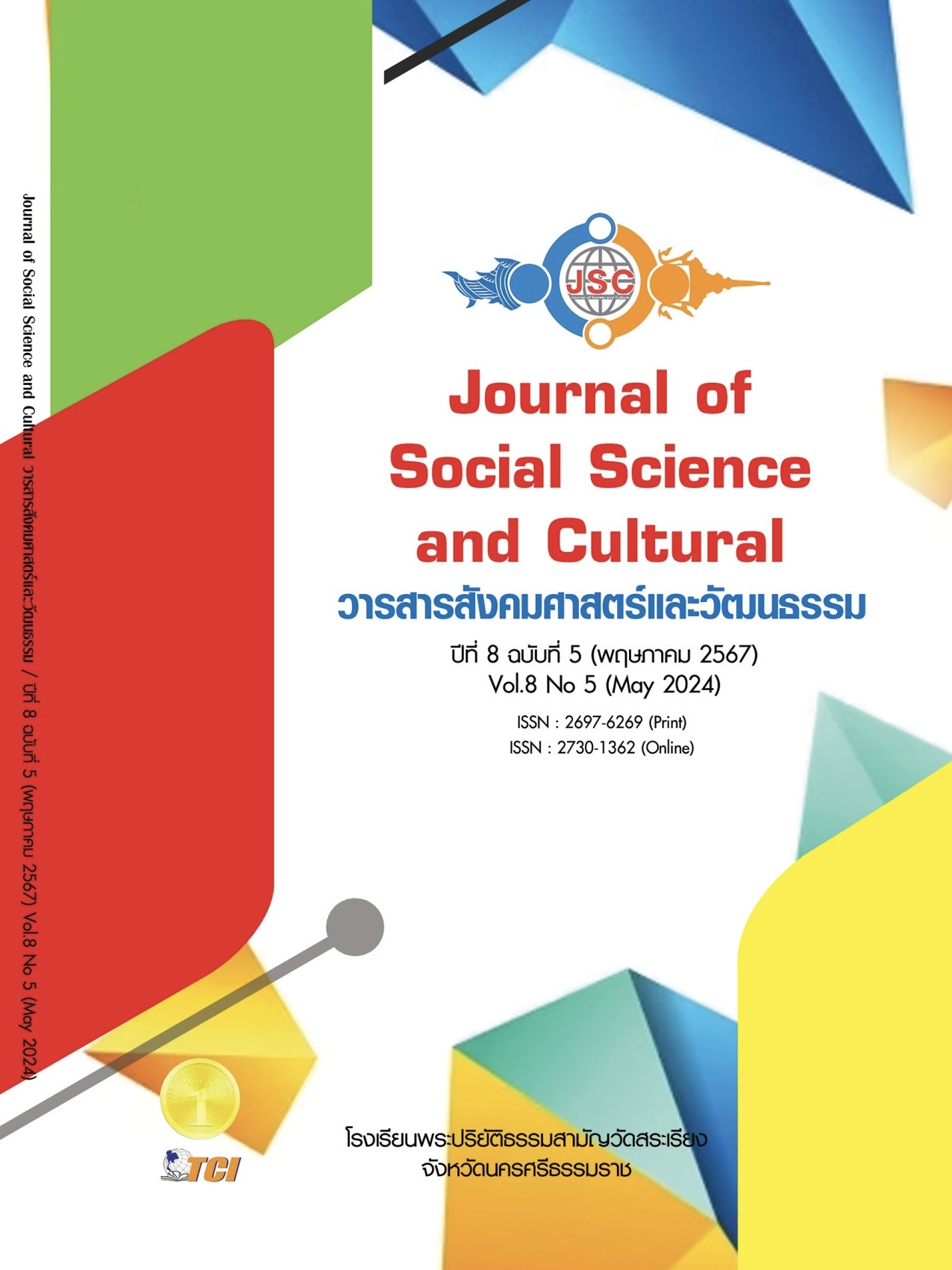CONCEPTUAL METAPHOR OF RICHNESS - POVERTY IN NORTHEASTERN THAI DIALECT
Main Article Content
Abstract
This research on conceptual metaphor of richness and poverty in the northeastern Thai dialect has the objective to analyse the conceptual metaphor regarding richness and poverty in the northeastern Thai dialect. This study will help reflect on the relationship of language and the thought system of people in Isaan society through the use of metaphors. As well as helping to understand the thinking system of language users regarding wealth - poverty more clearly. Humans use language to communicate. Especially the use of language in the form of comparisons in the thinking system of language users known as conceptual Metaphors This research is qualitative research. which collects information from 6 movies, 2 dramas and video clips from www.youtube.com 10 channels, 200 video clips, applying the theory of metaphor analysis of Lakoff and Johnson and Kövecses is according to the principles of linguistics. The results of this research found 96 words of conceptual metaphors for wealth, grouped into 4 concepts, and 118 words of conceptual metaphors for poverty, grouped into 4 concepts. This research is a reflection on the relationship of language and thought systems. which is related to the principles of Buddhist teachings about Itthipatha 4. In addition, this study helps reflect on the relationship between language and thought systems. Makes it possible to understand the thinking system of language users regarding richness and poverty. It can also expand the scope of study to other texts and other dialects.
Article Details
References
กิ่งแก้ว แห้วสุโน. ( 2552). อุปลักษณ์ในภาษาญ้อบ้านดงเย็น อำเภอเมือง จังหวัดมุกดาหาร. ใน ดุษฎีนิพนธ์นิพนธ์ศิลปศาสตรมหาบัณฑิต สาขาวิชาภาษาไทย. มหาวิทยาลัยมหาสารคาม.
เชิดชัย อุดมพันธ์. (2555). อุปลักษณ์เกี่ยวกับโรคในภาษาไทยถิ่นใต้. ใน วิทยานิพนธ์ปรัชญาดุษฎีบัณฑิต สาขาวิชาภาษาไทย. มหาวิทยาลัยสงขลานครินทร์.
ดุสิต เอื้อสามาลย์. (2536). สภาพสังคมอีสานจากภาพยนตร์ไทยระหว่างปี พ.ศ. 2520 - 2526. ใน ดุษฎีนิพนธ์นิพนธ์ศิลปศาสตรมหาบัณฑิต สาขาวิชาภาษาไทย. มหาวิทยาลัยศรีนครินทรวิโรฒ.
ธนพล เอกพจน์. (2561). อุปลักษณ์เชิงมโนทัศน์ความจนในภาษาไทย: กรณีศึกษาการใช้ภาษาไทยบนเว็บไซต์พันทิปดอทคอม. วารสารรมยสาร, 16(1), 377-400.
ธีรพล ศรีเป๊ะบัว. (2566). สุขด้วยธรรม “อิทธิบาท 4” ธรรมแห่งความสำเร็จของงาน. วารสารสุโขทัยธรรมาธิราช, 36(2), 108-115.
ศุภชัย ต๊ะวิชัย. (2561). สถานภาพงานวิจัยอุปลักษณ์เชิงมโนทัศน์ในภาษาไทย. วารสารอักษรศาสตร์ มหาวิทยาลัยศิลปากร, 40(2), 202-254.
หทัยวรรณ มณีวงษ์. (2555). อุปลักษณ์ที่เกี่ยวกับผู้ชายและผู้หญิงในเพลงลูกทุ่งอีสาน. ใน ดุษฎีนิพนธ์นิพนธ์ศิลปศาสตรมหาบัณฑิต สาขาวิชาภาษาไทย. มหาวิทยาลัยขอนแก่น.
Charteris, M. (2005). Politicians and Rhetoric: The persuasive power of metaphor. New York: Palgrave Macmillan.
Gilles, F. & Mark, T. (2002). The way we think: conceptual blending and the mind’s hidden complexities. New York: Basic Books.
Lakoff, G. & Johnson, M. (1980). Metaphor We Live By. Chicago and London: The University of Chicago Press.
Zoltán, K. (2010). Metaphor: A Practical introduction. Oxford: Oxford University Press.


